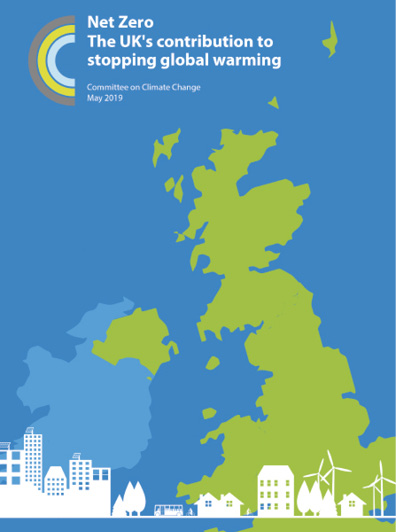FST JOURNAL
A Systems Approach
DOI: https://www.doi.org/10.53289/NXGA6917
All technologies will be needed to reach our net zero targets
Colette Cohen

Colette Cohen is the Chief Executive Officer for OGTC, an organisation committed to the research and development of technology to accelerate the Oil & Gas industry’s transition to an affordable net zero future. She is the Chair of the National Composites Centre and sits on the boards of OPITO, NORECO and the Lloyds Advisory Board. She is also a Commissioner for the Just Transition Commission for Scotland, a Trustee for Springer Rescue for Scotland and an ambassador for Powerful Women.
When people are asked what pictures come to mind when they think about climate change, emotive images of wildfires, parched earth and extreme weather are often cited. While much of the solution to the climate crisis involves engineering and science, delivery requires the commitment of nations and behavioural change from the people who live in those nations. People engage with climate change on an emotional footing, so it is difficult to communicate how technically complex the energy transition is. When you map out the steps on the path to net zero, it becomes clear just how many competing elements there are. Then there is a further challenge, which is particularly evident in Scotland, the concept of a Just Transition.
A legacy
This is a multi-layered, multi-faceted problem which is a consequence of changes that began literally hundreds of years ago. It is, after all, embedded in a series of industrial revolutions, starting with mechanisation 250 years ago, then the rise of electricity in the 19th century driving mass production and, latterly, automation. The computing revolution in the late 20th century greatly changed our expectations of how we live. Today we are moving into a world of intelligent systems, of instant feedback, automation, predictability, personalisation and a metaverse expanding by the day. Today’s world enables many of us to work from home during the pandemic. The pace of change – from the first mobile phones back in 1992 to the situation today where many of us have, literally, a mini-computer in our pockets, is quite stunning.
All those revolutions have been made possible by fossil fuels and therein lies the root of the climate change challenge. It should be remembered that these revolutions have provided health, wealth, education, mobility, longevity and, more than anything over the past couple of years, connectivity and access. So while we move beyond fossil fuels, we need to find a way to sustainably produce the durable, consumable and disposable items we use every day, some of which are luxuries, many of which are necessities.
Unfortunately the COVID 19 pandemic has exacerbated inequalities, exposing countries to further economic risk. The need for a just transition must be a priority and we have to put people and communities at the centre of that transition.
The energy transition
Adopting a systems approach to the energy transition represents a massive opportunity. The scale and impact of this transition allows a reshaping of the energy system, creating one that is sustainable, secure, affordable and inclusive in the long term. This should not be seen as a structure that is imposed upon us, but one that is designed and planned with intent and commitment. We need to build in innovation and pace, as well as measures to mitigate the impact of our decisions, ensuring that the solutions we find now do not become the problems of our children in the future. These solutions need to fix the planet, serving today’s people and our descendants.
So, what does the energy transition look like for the North Sea? In 2020, the value of the industry was about £15 billion, with renewables, hydrogen and Carbon Capture, Usage & Storage (CCUS) being a very small part of this pie. Over the next 30 years, market share of oil and gas will reduce, but not disappear entirely, with all the other energy systems contributions increasing. That vision is consistent with the scenarios of the Climate Change Committee (CCC) on how to create an integrated energy system for the future.
The energy transition should not be seen as a structure that is imposed upon us, but one that is designed and planned with intent and commitment.
One of the messages from the analysis is that there is room for everybody in the future energy system. To ensure a just transition, we need to use the transition period to deliver this integrated energy vision. This must be done in such a way that jobs can be transferred, with skills and capabilities redirected to achieve this integrated energy system.
 The public tends to understand climate change in emotional images of wildfires, parched earth and extreme weather, rather than cold, scientific fact.
The public tends to understand climate change in emotional images of wildfires, parched earth and extreme weather, rather than cold, scientific fact.
Realising the vision
In a study carried out in 2019, the Net Zero Technology Centre looked at the critical technologies needed to deliver this integrated energy future. There is a host of scenarios that could unlock a net zero future. For example, moving to blue hydrogen allows the industry to fast track the hydrogen economy, but also prepare for a green hydrogen future. There are many technologies that can be synergistic and complement each other.
The face of the North Sea is evolving from an oil and gas arena to somewhere where we reuse existing facilities for hydrogen and for carbon sequestration. It is also one where we generate power from wind, wave and tidal.

By reusing infrastructure that already exists, the carbon footprint of creating this new integrated energy system can be minimised.
It is critical to start investing at pace which means working in partnership, across government, industry and academia. The challenge is not just in building an integrated energy system, but in creating an integrated roadmap to encourage working through the complexities together, cross-sector and cross-industry. Solving the climate challenge together can create a new, sustainable, affordable net zero future, one that is fit for people and planet.
This implies nothing less than completely rethinking society, how we do business, and how we go about our day-to-day lives. It is just not possible to carry on living as though natural resources are unlimited. That may entail sacrifices like missing out on the next version of the smartphone that comes out every year. Yet maybe that is not what we should be wanting. Maybe we need to think about wanting less and still enjoying a better quality of life.
